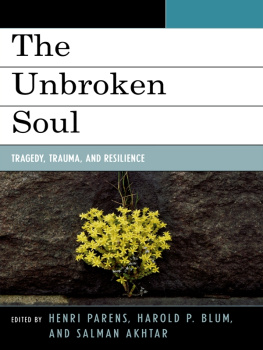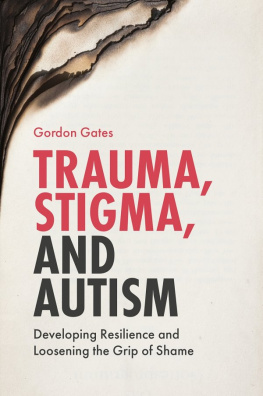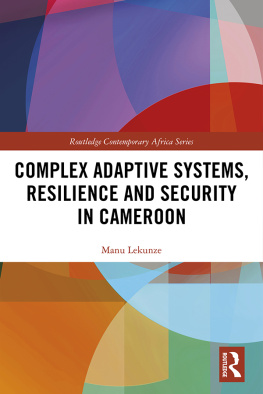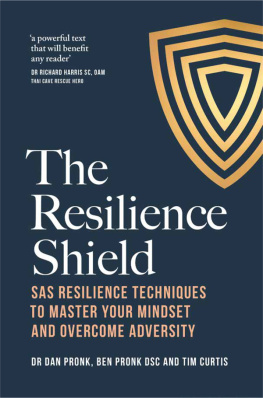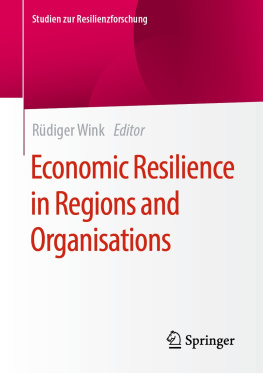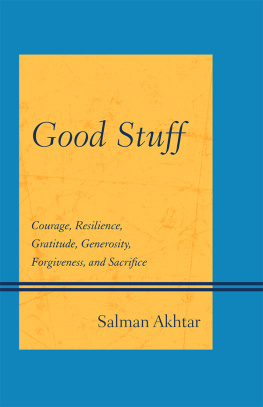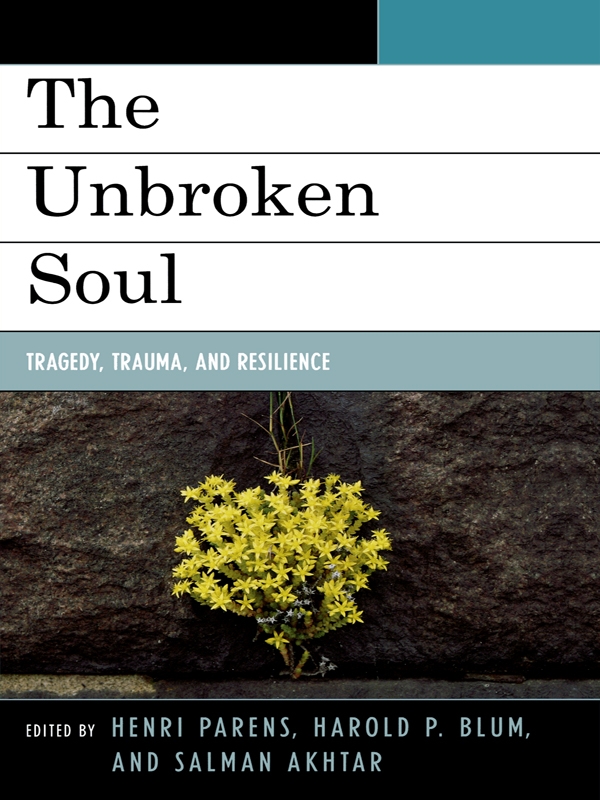T he chapters in this volume were presented at two Margaret S. Mahler Symposia on Child Development held annually in Philadelphia that addressed the related topics of trauma and resilience. All but two were part of the Thirty-Eighth Annual Symposium on Resilience held on April 14, 2007, at Jefferson Medical College. The other two were part of the Thirty-Fourth Annual Symposium on Trauma held on May 3, 2003, presentations that were not then published. The editors are indebted to the contributors to this volume. In addition, we are especially indebted to Dr. Michael Vergare, Chairman of the Department of Psychiatry and Human Behavior of Jefferson Medical College, and to Dr. Bernard Friedberg of the Psychoanalytic Center of Philadelphia, Chairman of the Psychoanalytic Foundation, both of whom supported our efforts to effect these symposia along the way. Special appreciation is extended to Melissa Nevin, who, with the help of a number of others from both institutions, contributed time and energy toward their preparation, occurrence, and success. We also thank those members of the Margaret S. Mahler Psychiatric Research Foundation who helped in the planning of these symposia, especially Drs. William Singletary and Jennifer Bonovitz.
ABOUT THE EDITORS AND CONTRIBUTORS
Susan C. Adelman, PhD, Faculty, Psychoanalytic Center of Philadelphia; Clinical Associate, Department of Psychiatry, University of Pennsylvania Health System; Adjunct Medical Staff, Pennsylvania Hospital
Salman Akhtar, MD, Professor of Psychiatry, Jefferson Medical College; Training and Supervising Analyst, Psychoanalytic Center of Philadelphia, Philadelphia, PA
Harold P Blum, MD, Clinical Professor of Psychiatry and Training Analyst, New York University School of Medicine, Department of Psychiatry
Ira Brenner, MD, Training and Supervising Analyst, Psychoanalytic Center of Philadelphia, Clinical Professor of Psychiatry, Jefferson Medical College
Boris Cyrulnik, PR.D., Dr. Hon. Causa, Neurologist, Psychiatrist, Director of Diploma of Attachment and Families Systems, University of Toulon, France
Henry Krystal, MD, Professor Emeritus of Psychiatry, Michigan State University, and Member of the Faculty, Michigan Psychoanalytic Institute and the Michigan Psychoanalytic Council
Linda C. Mayes, MD, Special Advisor to the Dean, Arnold Gesell Professor of Child Psychiatry, Pediatrics, and Psychology, Yale Child Study Center
Fatih Ozbay, MD, Assistant Professor of Psychiatry, Mount Sinai School of Medicine, New York
Henri Parens, MD, Professor of Psychiatry, Jefferson Medical College; Training and Supervising Analyst (Adult and Child), Psychoanalytic Center of Philadelphia, Philadelphia, PA
Barbara Shapiro, MD, Training and Supervising Analyst, Psychoanalytic Center of Philadelphia; Associate Professor of Pediatrics and Psychiatry, University of Pennsylvania School of Medicine
Melvin Singer, MD, Training and Supervising Analyst, Psychoanalytic Center of Philadelphia; Clinical Associate Professor, Department of Psychiatry, University of Pennsylvania School of Medicine
Steven M. Southwick, MD, Professor of Psychiatry, Yale School of Medicine; Deputy Director, National Center for PTSD, VA Connecticut HealthCare System
Glenda Wrenn, MD, Chief Resident in Psychiatry, University of Pennsylvania School of Medicine, Philadelphia, PA
THE BIOPSYCHOSOCIAL MIRACLE OF HUMAN RESILIENCE
An Overview
Salman Akhtar, MD and Glenda Wrenn, MD
T he deleterious impact of psychological trauma manifests in symptom clusters that are so diverse as to be practically innumerable. The most commonly seen pathways, however, are (1) phobic withdrawal from specific situations or from life in general, (2) masochistic brooding and injustice collecting (Bergler, 1961), (3) chronic anger and revenge seeking, (4) flashbacks, nightmares, startle reactions, and other signs of post-traumatic stress disorder ( DSM-IV-TR, 2000, pp. 463-468), and (5) making narcissistic capital out of misfortune and regarding oneself as an exception (Freud, 1916) to the ordinary rules and regulations of the society. All this is well established. It forms the daily staple of clinical practice in the mental health field. Less recognized is the fact that psychological trauma can, at times, have silently positive effects upon the individuals ego functioning and adaptation. These include vigilance, healthy stoicism, enhanced ambition, perseverance, and pursuit of knowledge about self and others. A posttraumatic increase in altruism is also sometimes evident.
Such Janus-faced consequences of trauma give rise to all sorts of questions. For instance, what determines whether positive or negative consequences will be predominant in the aftermath of trauma? What regulates their proportion? Is the outcome of trauma a once-and-for-all occurrence or subject to psychic elaboration, layering, and modification? Do pretraumatic ego assets matter more in governing the outcome of trauma than the ameliorative influences that follow it? What is the role of intelligence, inborn talents, imagination, and fantasy here? How and to what extent do societal institutions (e.g., organizations, museums, memorials) and cultural containers (e.g., theater, cinema, poetry) help transform the impact of individual or group trauma? And, so on.
From this panoply of curiosity, one question stands out for the clinician: why is it that some individuals crumble in the face of trauma while others can withstand any assault on their system? In other words, what are the genesis, dynamics, and epistemology of resilience?
What Is Resilience?
The major psychoanalytic glossaries (Eidelberg, 1968; Laplanche & Pontalis, 1973; Moore & Fine, 1968, 1990; Rycroft, 1968) do not list resilience as a recognized term, and the index to Freuds collected works has no entry on it ( Standard Edition, Vol. 23). Turning to the English language, one finds resilience defined in Websters Ninth New Collegiate Dictionary as 1: the capability of a strained body to recover its size and shape after deformation caused especially by compressive stress, 2: an ability to recover from or adjust easily to misfortune or change (Mish, 1987, p. 1003). A careful look at this definition reveals that resilience (1) can involve both physical and psychological realms, (2) is not only a response to trauma but to change in general, and (3) consists of either a return to the psychosomatic status quo or to a more or less harmonious adaptation to the altered inner or outer reality.
The last mentioned characteristic brings forth the linguistic conundrum involving the relationship between resilience and flexibility. While occasionally used interchangeably (Kay, 1976, pp. 343, 673), the two denote rather different phenomena. Flexibility indicates malleability, compliance, and adjustment to changed situations. Resilience, in contrast, puts a premium on return to the original state, defiance, and recovery. In Hartmanns (1939/1958) terms, flexibility is closer to autoplastic and resilience to alloplastic adaptation.
This brings us back to psychoanalytic literature pertaining to the forces that lead individuals toward self-protection and recovery from mishaps and hardships. Freuds (1905, 1909, 1915) description of ego instincts is a case in point here. These instincts served self preservative (1909, p. 44), self seeking (1908, p. 212), and self subsisting (1930, p. 122) aims. The prefix self in this context is usually taken to mean bodily self, and it does have that connotation. However, it also includes the psychic self; thus, the aims of ego instincts were also psychically self-preservative and self-seeking. Freud emphasized that self-preservative instincts operate in accord with the reality principle and strive for what is useful to guard against damage to the individual.

